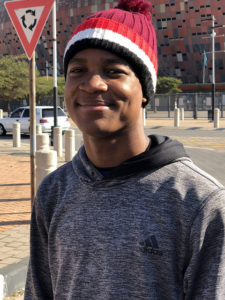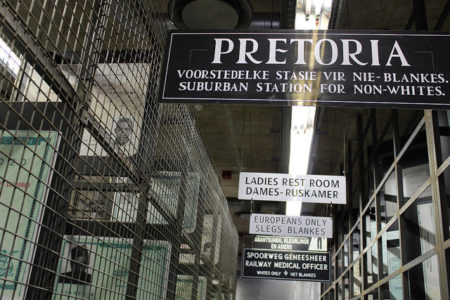 Saturday, June 30 – Today, I went to the Apartheid Museum in Johannesburg, South Africa. Through this experience I learned and realized that there are many similarities between the Civil Rights Era and Apartheid. In South Africa, colored and black people were segregated and put into townships with poor conditions. They were also arrested, fined and even killed for speaking out against the totalitarian government. This is similar to the way that in the 1960’s African American people in the United States were segregated and deprived of basic human rights.
Saturday, June 30 – Today, I went to the Apartheid Museum in Johannesburg, South Africa. Through this experience I learned and realized that there are many similarities between the Civil Rights Era and Apartheid. In South Africa, colored and black people were segregated and put into townships with poor conditions. They were also arrested, fined and even killed for speaking out against the totalitarian government. This is similar to the way that in the 1960’s African American people in the United States were segregated and deprived of basic human rights.
I learned about the differences between “Colored” and “Black” people in Apartheid South Africa. At first, this was confusing to me because in the United States, African American people were referred to as colored. In South Africa during Apartheid, “mixed race” people, and sometimes people of Indian descent were classified as colored. They  were often treated better than black people, a category which included African people and sometimes even Chinese people. The Apartheid government used this strategy to divide people into classes based on their race. Lastly, the people who had the most status were people who were classified as white. White people included European people and Japanese people. The reason that Japanese were included was because the white South Africans who controlled the government wanted to use and buy Japanese cars.
were often treated better than black people, a category which included African people and sometimes even Chinese people. The Apartheid government used this strategy to divide people into classes based on their race. Lastly, the people who had the most status were people who were classified as white. White people included European people and Japanese people. The reason that Japanese were included was because the white South Africans who controlled the government wanted to use and buy Japanese cars.
During the second part of the day, we went back to KYP and built the soccer goals that we bought. This was the fourth step in our process of human centered design, called prototyping. This is an important step because it is the first test of our solution. This step helps us to make sure that our plan to fix the problem is successful and sustainable. Quickly after setting up the goals, we decided that the nets would need zip ties to stay in place because the string was too weak.

At the end of the day, we went to an American style burger restaurant called BGR. The company hires young people in order to give them skills to enter the workplace and be employable. This model was designed to help the high unemployment rate in South Africa. We met with the CEO, and he answered questions about the process of starting the restaurant. At first, they started as a food truck. After about a year, they realized that food trucks were not that popular. They opened up a place in Johannesburg and that is where we ate. They have gotten the approval to open up three more stores, one of which may be in Cape Town.
Marcus B., Flint Hill School
